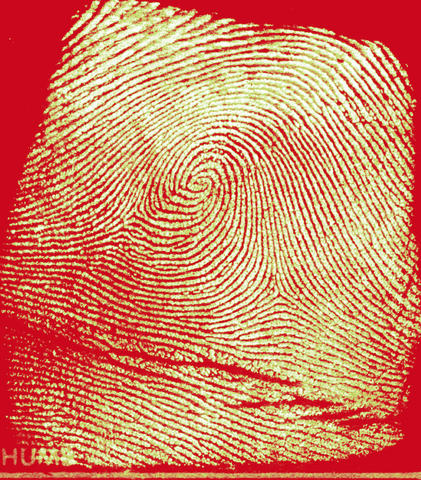
While television may portray forensic science as able to distill the most complex crime scenes in under an hour, real life forensic lab workers know the limits of what science can tell them.
Experts who work on evidence analysis, as well as those who define the underlying science, are gathering this week in Providence, R.I., to discuss cutting edge technologies that could push the existing limits outward and enable faster and more powerful forensic science tools for the future.
Several forensic science experts from the National Institute of Standards and Technology (NIST) are joining them to give presentations at the International Association for Identification annual meeting.
"NIST researchers have played a role in supporting and validating forensic science methods for nearly 100 years," says Mark D. Stolorow, director of the NIST Law Enforcement Standards Office. "A look at the talks NIST scientists are giving this week gives you a good sense of the current hot topics in forensic science of interest to IAI members."
So, what are those hot topics that NIST scientists will be covering?
Fingerprints
Melissa Taylor, a NIST forensic science program manager, will be giving presentations on a specification for open standards for searching fingerprint databases across federal, state and local jurisdictions. The specification is known as LITS for Latent Interoperability Transmission Specification. Ms. Taylor will talk about LITS on Tuesday, Aug. 6 from 8:00 to 9:00 a.m.
On Thursday, Aug. 8, 8:00 to 9:00 a.m., Ms. Taylor will give a presentation on the need for recommended best practices in searching AFIS (Automated Fingerprint Identification System) as new functions are introduced by the FBI's Next Generation Identification program and as new interoperable systems come online. These improvements will provide latent print examiners with unparalleled access to databases, but may also require new methods to search efficiently and ensure the best search results.
Also, on Aug. 8, from 3:00 to 4:00 p.m., Ms. Taylor will conduct a training session for fingerprint examiners on a new training tool for the extended feature set markup guidelines, a new quantifiable standard method of characterizing the information content of a fingerprint or other friction ridge image. The tool was developed through a collaboration of NIST, the FBI and Noblis, a nonprofit science and technology organization.
On Thursday, Aug. 8 at 12:30 p.m., Shahram Orandi, a scientist with the NIST Information Technology Laboratory Image Group, will lead a panel presentation on reducing the digital size of friction-ridge images. Scientist John Libert and mathematician Stephen Wood, also of the NIST Information Technology Laboratory Image Group, will participate on the panel.
The panel will present findings from the recently concluded NIST compression study including the new guidance for the compression of 1000 ppi grayscale friction ridge imagery using JPEG-2000 (NIST Special Publication 500-289) resulting from the study. Presenters will cover:
- NISTIRs 7778, 7780 and 7781 as the basis for the guidance on lossy compression of 1000 ppi exemplar imagery;
- NISTIR 7779 as the basis for the guidance on lossless compression of 1000 ppi latent imagery;
- NISTIR 7839 as the basis for the guidance on downsampling of 1000 ppi friction ridge imagery to 500 ppi to support interoperability with legacy systems.
The NIST compression study is a follow-up to the 1994 IAI study (Fitzpatrick, et al.) that served as the basis of guidance currently in use for the compression of 500 ppi non-latent fingerprint imagery using the WSQ algorithm.
Ballistics
NIST's Ballistics Identification System assists in accurate ballistic identifications and fast ballistics evidence searches. Wei Chu, a guest researcher in the NIST Physical Measurement Laboratory, and Robert M. Thompson, a NIST program manager for forensic data systems, will give a talk about a new method, called congruent matching cells, proposed for high accuracy ballistics identifications. This talk takes place on Wednesday, Aug. 7, 8:30 to 9:00 a.m. Other NIST authors include Mingsi Tong, Johannes Soons and John Song.
Also on Wednesday, Aug. 7, from 9:00 to 9:30 a.m., Mr. Thompson will give a presentation on "2D/3D Topography Comparisons of Toolmarks Generated by Consecutively Manufactured Chisels and Punches." This validation experiment describes the toolmark comparisons from chisels and punches using objective mathematical comparisons that measure the similarity of 3D topography in impressed marks (punches), and the 2D topography in striated marls (chisels). Mr. Thompson's co-authors include Xiaoyu Alan Zheng, John Villanova and Johannes Soons.
Research Results
In a talk titled "Consider Research Results Before Analyzing that Case," NIST Forensic Science Program Manager Susan Ballou will address recent forensic science research results. Her talk, scheduled for Wednesday, Aug. 7 from 1:00 to 1:30 p.m., will cover three topics:
- Shiftwork in the laboratory and how to impose rest and duty restrictions to mitigate errors;
- What do "K2", "spice" and "bath salts" really mean?
- Results of a study tracking and storage of evidentiary material throughout the judicial process.
National Commission on Forensic Science
On Tuesday, Aug. 6 from 1:00 to 1:45 p.m., Ms. Ballou and International Association for Identification President Deborah Leben will give an update on the creation of a National Commission on Forensic Science.
* * *
The NIST Law Enforcement Standards Office helps criminal justice, public safety, emergency responder, and homeland security agencies make informed procurement, deployment, training and operating decisions by developing performance standards, measurement tools, operating procedures and equipment guidelines.

